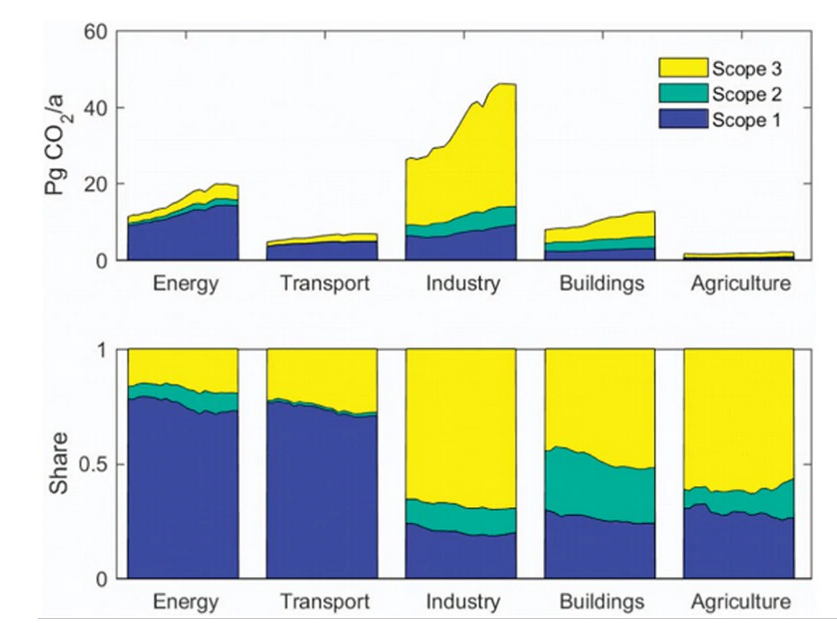Important information
The Robeco Capital Growth Funds have not been registered under the United States Investment Company Act of 1940, as amended, nor or the United States Securities Act of 1933, as amended. None of the shares may be offered or sold, directly or indirectly in the United States or to any U.S. Person (within the meaning of Regulation S promulgated under the Securities Act of 1933, as amended (the “Securities Act”)). Furthermore, Robeco Institutional Asset Management B.V. (Robeco) does not provide investment advisory services, or hold itself out as providing investment advisory services, in the United States or to any U.S. Person (within the meaning of Regulation S promulgated under the Securities Act).
This website is intended for use only by non-U.S. Persons outside of the United States (within the meaning of Regulation S promulgated under the Securities Act who are professional investors, or professional fiduciaries representing such non-U.S. Person investors. By clicking “I Agree” on our website disclaimer and accessing the information on this website, including any subdomain thereof, you are certifying and agreeing to the following: (i) you have read, understood and agree to this disclaimer, (ii) you have informed yourself of any applicable legal restrictions and represent that by accessing the information contained on this website, you are not in violation of, and will not be causing Robeco or any of its affiliated entities or issuers to violate, any applicable laws and, as a result, you are legally authorized to access such information on behalf of yourself and any underlying investment advisory client, (iii) you understand and acknowledge that certain information presented herein relates to securities that have not been registered under the Securities Act, and may be offered or sold only outside the United States and only to, or for the account or benefit of, non-U.S. Persons (within the meaning of Regulation S under the Securities Act), (iv) you are, or are a discretionary investment adviser representing, a non-U.S. Person (within the meaning of Regulation S under the Securities Act) located outside of the United States and (v) you are, or are a discretionary investment adviser representing, a professional non-retail investor. Access to this website has been limited so that it shall not constitute directed selling efforts (as defined in Regulation S under the Securities Act) in the United States and so that it shall not be deemed to constitute Robeco holding itself out generally to the public in the U.S. as an investment adviser. Nothing contained herein constitutes an offer to sell securities or solicitation of an offer to purchase any securities in any jurisdiction. We reserve the right to deny access to any visitor, including, but not limited to, those visitors with IP addresses residing in the United States.
This website has been carefully prepared by Robeco. The information contained in this publication is based upon sources of information believed to be reliable. Robeco is not answerable for the accuracy or completeness of the facts, opinions, expectations and results referred to therein. Whilst every care has been taken in the preparation of this website, we do not accept any responsibility for damage of any kind resulting from incorrect or incomplete information. This website is subject to change without notice. The value of the investments may fluctuate. Past performance is no guarantee of future results. If the currency in which the past performance is displayed differs from the currency of the country in which you reside, then you should be aware that due to exchange rate fluctuations the performance shown may increase or decrease if converted into your local currency. For investment professional use only. Not for use by the general public.
Sustainable Investing
Greenhouse gas emissions | GHG emissions
Greenhouse gas emissions are the levels of carbon dioxide, carbon monoxide, sulfur dioxide and other gaseous byproducts of the industrial processes of a company in its business operations.
They are cited as being the principle cause of global warming, since they become trapped in the Earth’s atmosphere, creating a blanketing effect.
The need to decarbonize companies – and thereby portfolios – becomes more urgent as evidence of global warming mounts with every passing year. In order to combat it, it is important to be able to measure it. The Greenhouse Gas Protocol was set up to establish comprehensive global standardized frameworks to measure and manage emissions from private and public sector operations, value chains and mitigation actions. It is based on a 20-year partnership between the World Resources Institute and the World Business Council for Sustainable Development. Its calculation tools are used by companies, municipalities and governments to measure greenhouse gas emissions and carbon footprints.
Some carbon footprints are more obvious than others; power generators that burn coal to make electricity obviously emit more CO2 in the resulting emissions than a bank on the high street. The bank’s footprint would essentially be any emission produced as a result of heating, cooling and ventilating the building. But they can be deceptive – many people think going online to send an email or download a movie is non-polluting. Yet, the infrastructure surrounding the internet, including the energy-intensive data centers needed to make it all work, has a carbon footprint that is almost as high as the airline industry.
Greenhouse gas emissions that cause the footprints are measured in three ways: Scope 1, 2 and 3. Scope 1 emissions are those that are directly generated by the company, such as an airline emitting exhaust fumes. Scope 2 emissions are those that are created by the generation of the electricity or heat needed by the company to sell its main products. An electricity utility would therefore have relatively low Scope 1 emissions caused by its infrastructure or grid, but high Scope 2 emissions if it’s power came from the burning of fossil fuels rather than from renewable sources. Scope 3 emissions are those caused by the entire value chain, including the end-user of the product over its life cycle, and are much more difficult to measure. A carmaker would have relatively low Scope 1 and 2 emissions for making the car, but the user of the vehicle would burn petrol to run the car over many years, causing very high Scope 3 emissions.

Scopes 1-3 emissions of the five IPCC sections over the period 1995-2015, calculated using EXIOBASE 3
Source: IOPscience
One solution to lowering carbon footprints is seen as the introduction of a carbon tax that makes companies pay for emissions above a certain threshold. They would therefore have a choice of a large increase in costs, harming their profitability and long-term viability, or cutting carbon to avoid the tax.
















